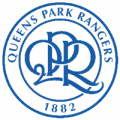
Philadelphia Phillies

Pensilvania
The Philadelphia Phillies, established in 1883, are one of the oldest continuously operating teams in American professional baseball, representing a rich history of triumphs, challenges and unforgettable moments that have left an indelible mark on the hearts of their fans and the city of Philadelphia. Over the decades, the Phillies have experienced both the ecstasy of victory and the trials of difficult seasons, forging a unique identity in the baseball landscape and creating a deep connection with their loyal fan base.
The Formative Years: Building a Foundation
The Phillies' story begins in the 1880s, a period marked by the challenges of establishing a competitive team in the nascent world of professional baseball. Despite initial difficulties, the Phillies began to forge their identity, noted for their resilience and ability to compete against more established teams. These early years laid the foundation for what would eventually become a rich baseball tradition in Philadelphia.
The Whiz Kids Era: A Turning Point
The 1950 season marked a turning point for the Phillies with the rise of the "Whiz Kids," a young and talented group that led the team to its first World Series appearance since 1915. Although the Phillies lost to the New York Yankees, the impact of the Whiz Kids was profound, reviving interest in the team and planting the seeds for future generations of Philadelphia baseball fans.
1980: The Conquest of the First World Championship
The 1980 season stands out as the year the Phillies captured their first World Series championship, a historic triumph that unified the city and solidified the team's legacy. Led by stars such as Mike Schmidt, Steve Carlton and Pete Rose, the Phillies demonstrated their prowess on the field, culminating in a thrilling victory over the Kansas City Royals. This championship not only represented the culmination of years of hard work and dedication, but also ushered in a new era of success and aspirations for the franchise.
The Years of Challenge and Change
Despite the triumph in 1980, the Phillies faced challenging periods in the following decades, alternating between promising seasons and rebuilding seasons. The 1990s and early 2000s witnessed the team's ongoing quest to return to prominence, marked by moments of individual brilliance and collective efforts to rebuild and redefine the team's direction.
The 2008 Rebirth: Champions Once Again
The Phillies' renaissance reached its peak in 2008, when the team captured its second World Series championship, defeating the Tampa Bay Rays in a thrilling series. This team, led by players such as Chase Utley, Ryan Howard, Jimmy Rollins and Cole Hamels, revitalized the city of Philadelphia with their energy, talent and commitment. The 2008 victory reaffirmed the Phillies as a baseball powerhouse and rekindled pride and passion among their fans.
Citizens Bank Park: More Than A Stadium
Opened in 2004, Citizens Bank Park is not just the home of the Phillies; it is an emblem of the city of Philadelphia, offering fans an unparalleled baseball experience. Designed to capture the essence of classic ballparks with modern amenities, this park has been the scene of countless memorable moments in recent Phillies history. With breathtaking views of the Philadelphia skyline, diverse dining offerings that reflect the city's rich culinary culture and family entertainment areas, Citizens Bank Park is more than a ballpark; it is a gathering place for the community, where baseball traditions are celebrated and lasting memories are created.
Throughout their history, the Philadelphia Phillies have represented more than a baseball team; they are a symbol of perseverance, community and pride for the city of Philadelphia. From their humble beginnings to their World Series triumphs, and through the ups and downs of each season, the Phillies have maintained a special relationship with their fans, providing not only sports entertainment, but also a source of inspiration and unity for the city they represent.








































